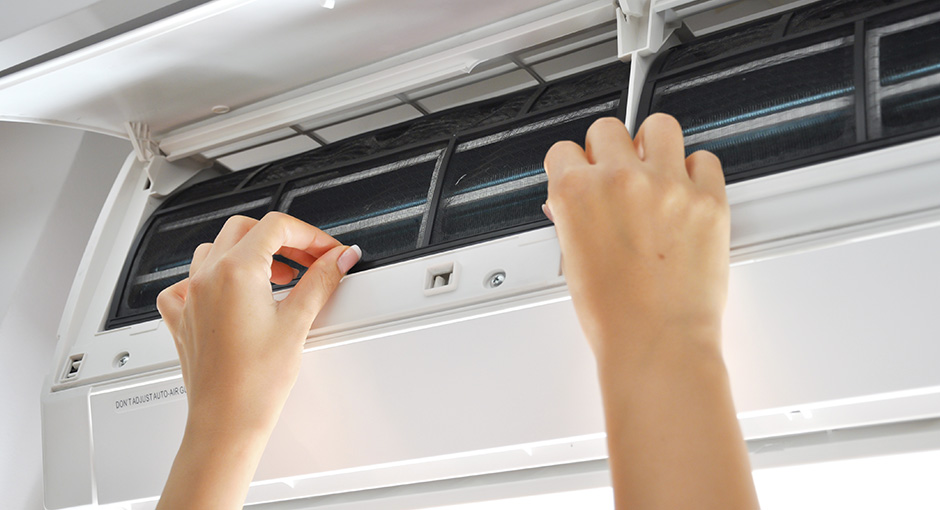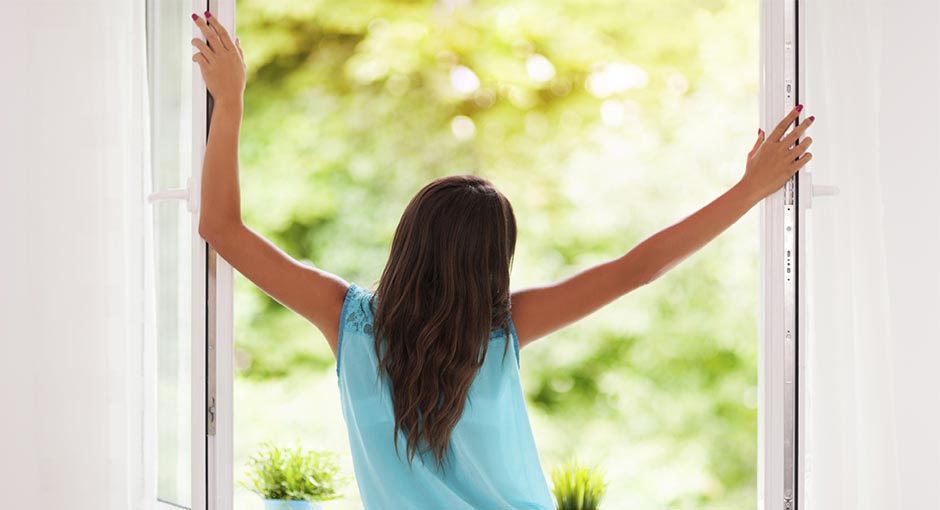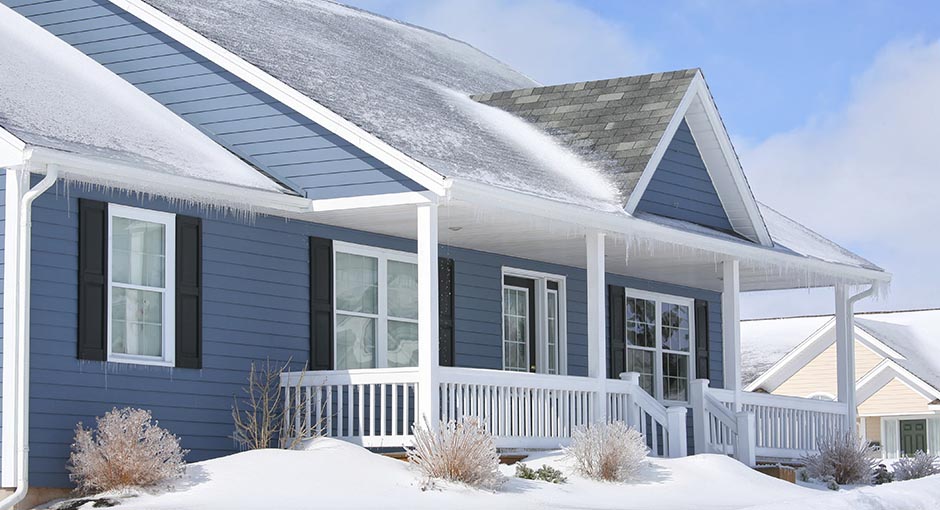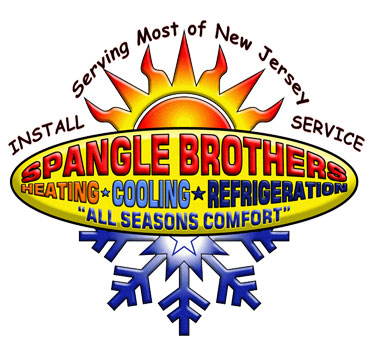Are you looking for an efficient, low-cost solution to satisfy room temperature troubles? No matter what size space you’re trying to cool or heat, discover energy efficient savings and eco-friendly solutions, while keeping the temperature just right inside your home.

FIVE POPULAR MISCONCEPTIONS ABOUT DUCTLESS HEAT PUMPS
Like any technology, ductless heat pumps need to be used properly and under the right conditions in order to achieve maximum value from them. And like anything in the internet age, ductless heat pumps are subject to all kinds of misinformation and misconceptions that can mislead consumers. Here are five of the biggest misconceptions being spread about ductless heat pumps.
They Are More Expensive To Run Than Oil Or Gas Heaters
This is demonstrably false. The cost saving associated with split-ductless heat pumps is dependent upon a number of factors, including the efficiency, condition and location of the original equipment, energy type and climatic region. Yet study after study shows that the use of electric heat pumps will save you between $1,000 and $2,000 annually in energy costs.
They Collect And Distribute Bacteria
Most split-ductless heat pumps are equipped with filter systems and self-cleaning functions, so that bacteria and spores don’t have an opportunity to settle. Incoming air is purified in several steps. Large plastic filters which cover the heat exchanger, as well as electric filter collectors, can both be washed with soapy water. An internal fan insures that the heat exchanger dries completely, eliminating any chance of bacterial growth.
They Are Only Suitable For New Construction and Not Existing Properties
Like any heating system, ductless heat pumps are more efficient in well-insulated new build houses, where they are often combined with other heating systems such as underfloor in order to make full use of all available space. But they are also a perfectly good option for existing housing stock, and an especially good option when the homeowner wants to add air conditioning as well as upgrade their heating system.
They Don’t Have A Long Life Cycle Because They Operate Twelve Months A Year
This is simply wrong. Dirt, improper application and service, plus lack of preventative maintenance are the main reasons for heat pump failure. You operate your vehicle for twelve months a year, too, but you don’t expect a top quality model to break down for that reason alone. They Don’t Work In Cold Climates Hyper-Heat systems offer 100 percent heating capacity at 5° F outdoor ambient, and offer performance down to -13° F outdoor ambient, so they're the perfect supplement to an existing central heating system. Offering higher efficiency ratings than boiler-based systems, ductless heat pumps cost less to operate by maximizing the amount of heat generated from the energy consumed.
Where’s All the Money Going?
Central air and other similar ducted systems are catch-all heating solutions that lack the precision and control of their ductless counterparts. When a forced air system works to cool or heat your home, you have little control over where that air goes. This means that vacant rooms are getting the same amount of energy and service as your favorite spots in the house. It’s wasteful, inefficient and expensive to cool or heat the basement storeroom the same way you cool or heat the kitchen or bedroom. But a ducted system doesn’t allow for that kind of precise control. So the cold or warm air flows throughout your home and you see the results of this inefficiency on your utility bill every month.
Traditional HVAC Fall Short
Thermostat placement is rarely conducive to providing accurate comfort control in other areas. For example, thermostats can often be found in a home’s master bedroom. When the temperature in that room is adjusted, the children’s room across the hall may not be receiving the comfort that it needs.
Ductwork tends to run through uninsulated spaces, which leads to thermal heat loss. If there is a leak in the ductwork, or if flex-ducting is pinched due to improper installation, duct-loss will lead to wasted energy as the system has to compensate for the wasted energy.
Conventional systems use a standard single speed compressor that can only run at full speed. This means that the system works at full capacity until the desired temperature is achieved, then shuts off. As the temperature changes, this cycle repeats and can create uncomfortable drafts and expensive energy spikes.
Our ductless system uses an INVERTER-driven compressor to provide exact control 100 percent of the time. They constantly adjust to even the slightest temperature changes in the room so that it doesn’t fluctuate – and they don’t waste money or energy on the zones where you spend little time. The ductless unit is installed to deliver room-by-room comfort in the spaces you choose. The majority of your cooling and heating energy (and money) goes where you need it, and not where you don’t. In this way, you get personalized comfort in the rooms you use most. This is known as “zone control”. Even More Ways to Save Most ductless systems have earned the ENERGY STAR, which means savings as they operate, as well as applicable ENERGY STAR rebates. Some units are eligible for state or federal tax credits, or local utility discounts.

...study after study shows that the use of electric heat pumps will save you between $1,000 and $2,000 annually in energy costs.
The quality of air inside today’s homes is often worse than the air lingering outside. Viruses, bacteria, allergens, dust motes, gasses and other contaminants circulate inside, creating breathing hazards and bad odors. Homes with the best insulation, unfortunately, tend to trap odors, pollen and other contaminants within their airtight walls due to a lack of airflow most commonly found in older homes.

Indoor air pollution is among the five top environmental health risks, according to the Environmental Protection Agency. Installing a whole-home cooling and heating room system is a good way to ensure better, fresher air.
A whole-home room system offers several air cleaning solutions, including:
Multi-Stage Allergen Filtration:
These systems run air through a multi-stage allergen filtration system, which removes contaminants and odors before pumping the air back into the room. A blue-enzyme, anti-allergen filter reduces bacteria, germs and viruses. It also traps dust, pollens, mites and other particles that make life miserable for allergy sufferers.
Platinum Deodorizing Filter:
Available on select systems, Platinum Deodorizing filters use nanotechnology to absorb odors. A nanometer-sized deodorizing filter traps airborne odor-bearing particles. Once the particles are caught, a plasma electrode generates ozone to decompose them. These filters eradicate the worst smells.
Catechin Filter:
Mitsubishi Electric has developed an advanced filter using catechin, a bioflavanoid that deodorizes!
Easy to Clean Filters:
The Mitsubishi Electric filtration is sophisticated and easy to maintain. If cleaned regularly, the hybrid catechin filters can last up to 10 years. Homeowners can now clean filters in a matter of minutes. Just open the indoor unit’s filter access, remove the screens, wash the filters in the sink and allow them to dry thoroughly before sliding them back in. This is not only cost-effective, but helps the environment by keeping filters from being frequently thrown away. From dust and pollen to microscopic viruses, there are literally millions of small reasons that air filtration is the better way to healthier air.
Finding a home that requires the same amount of cooling and heating throughout is a challenge. In fact, it’s probably impossible. Basements, attics, first floors, second floors, fronts, backs – all have unique needs based on the home’s size, windows, facings, insulation, doors and even the home’s position towards the sun. In the past, it has been difficult to mitigate these differences. Homeowners were simply forced accept the fact that some areas of the house would be comfortable, while others would not.
Total Home Comfort Can Be a Reality When the only option for modern cooling and heating was a ducted central HVAC system, the reality of the uncomfortable home was normal. In recent years, however, there have been significant advances in cooling and heating, including zoning.
A zoned home is divided into segments based on each area’s need for conditioning. Rather than relying on a single unit to cool or heat the entire property, multi-zoned homes utilize a network of small, energy efficient units and thermostats to send the right amount of conditioned air to each zone. This allows homeowners to have room-by-room control.
Homes that can benefit from zoned systems include:
• Homes with two or more stories
• Homes with finished, livable basements
• Rooms that get blocked off in the winter or summer because of comfort issues
• Rooms with large windows or high ceilings
• Large families that often find themselves battling over the thermostat
• Older, historic homes in which traditional ductwork is implausible
Zoning Provides Room-by-Room Comfort Customization The number of zones a home can benefit from will depend on its size and layout. In some cases, a single zone can cool or heat an entire floor. In others, a multi-room system would be used to divide the home up into several temperature control zones. The greatest benefit of zoning is the level of customization that can be achieved. You can cool and heat only the zones in use, which not only improves personal comfort, but reduces overall energy consumption and costs.
While ducted HVAC systems can be “zoned”, they never quite achieve the same level of customization and precise control that is possible with a ductless system. When every segment of the house is manageable by its own unit, it means that every room of the home and every family member in the home can achieve total comfort, no matter what time of day or time of year.
Most people have heard of ductless cooling and heating systems, and they have probably seen the small, indoor devices installed high on walls in homes, restaurants or office buildings. But what do you really know about these systems?
1. They Offer Highly Flexible Solutions
Whereas traditional heat pumps and central air conditioning systems force cooled and heated air through ducts, ductless systems deliver air directly into different zones. They are comprised of a small outdoor unit and one or more indoor units that require nothing more than mounting capabilities and access to electricity. Sometimes referred to as split systems, multi-split systems, or split-ductless systems, ductless cooling and heating offers home and business owners a cost-effective way to replace inefficient window units, space heaters and electric baseboard heaters. They can be installed in home additions, new construction, condominiums and apartments, or to improve temperature control in specific rooms. Ductless systems can even be fit for buildings that currently use ducted forced-air systems.
2. They Save You Money
One of the biggest reasons why homeowners switch to ductless cooling and heating is overall cost savings. In recent years, utility costs across the country have skyrocketed. When a home’s temperature depends upon an inefficient system, monthly bills can quickly climb out of control. Ductless systems operate on less power – they are smaller than traditional forced-air systems, and because the temperature-controlled air is delivered directly into a room, there is no loss in efficiency. Multi-split systems also allow homeowners to create “zones” in their home, which means they no longer have to cool or heat rooms that aren’t occupied. In addition to saving money on utilities, homeowners may also be eligible for tax credits or utility rebates for the year they install a ductless system. There are many programs at the federal, state and local level that allow homeowners and businesses to take advantage of these additional savings.
3. They Improve Indoor Air Quality
Often times, the quality of indoor air can actually be lower than the quality of outdoor air. With traditional HVAC systems, air ducts must be professionally cleaned on a regular basis, and even after cleaning, dust and allergens are left behind. Ductless systems, on the other hand, offer multi-stage filtration that can drastically reduce dust, bacteria, pollen, allergens and other particulates in the air.
4. They Are Quicker to Install
Installing a traditional, ducted system can take several weeks and disrupts daily activities in the home. Ductless systems are far less invasive to install, and depending upon the number of indoor and outdoor units required, can be up and running in as little as one day. Multi-split systems run on small pipes that require a mere three-inch hole. That means homeowners don’t have to worry about rebuilding walls or ceilings around ductwork and there is no loss of precious square footage.
5. Ductless Cooling Lowers Your Carbon Footprint
The small size of a ductless cooling system and its zoning capabilities allows for greater energy efficiency. Ductless cooling and heating systems follow ENERGY STAR guidelines, which means they are far more energy efficient than the minimum standards set forth by the U.S. federal government. Improved efficiency saves money, of course, but it also helps reduce your total carbon output. Additionally, ductless systems take advantage of advances in chemistry to reduce effects on the environment. Ductless systems use a refrigerant called R410A, which is known for its zero ozone depletion potential. This means the system will have less impact on the environment throughout its lifecycle. Ductless cooling and heating systems are energy efficient, environmentally friendly and completely customizable.
When ductless cooling and heating units first became popular, they had one very serious limitation – they were not recommended for homeowners in extremely cold climates. Many manufacturers would recommend that homeowners who live in northern regions adopt a supplemental heating source for extremely cold days, which cancelled out the energy efficiency of the unit. Many ductless systems were actually designed to shut down at -10º F in order to protect the technology from failure. This left homeowners using expensive heat pumps, space heaters and even dangerous propane tanks to heat their homes. Technology has finally evolved and homeowners can now achieve exceptional, year-round comfort with a single split-ductless unit. These new units are able to heat at maximum efficiency no matter how cold the climate – even to -13º F.

How Does it Work?
Traditional split systems lose heat energy in the outdoor coil. Thanks to recent advances, Hyper-Heating INVERTER technology (H2i®) is able to collect that energy, helping the system to continue to operate at capacity in extreme temperatures.
In cold climates, heat pumps typically experience a decrease in pressure, refrigerant flow rate and operational capacity. INVERTER technology actually allows for higher heating speeds at a lower temperature, without putting extra strain on the unit or potentially causing long-term damage to the compressor.
Some of the differences between traditional technology and H2i technology that make it attainable for those who live in cold climates include:
Consistent Room Temperature - No Ups and Downs, Ons and Offs:
Conventional heat pumps experience uncomfortable and extreme temperature fluctuations while INVERTER-driven pumps are able to self-adjust, providing consistent room temperature, even when the outdoor temperature dips below zero.
Consumer Only The Energy You Need:
INVERTER zoning systems deliver only the amount of hot air needed to achieve the desired temperature – no more, no less.
Heats Up Quickly:
It takes traditional systems a very long time to reach the desired temperature, while the high rotation speeds of INVERTER systems allow for quick and efficient cooling and heating.
Energy Use is Even and Steady:
Every time the compressor turns on in a traditional unit, energy consumption surges. On startup, INVERTER systems use less current, avoiding spikes in energy usage.
Homeowners who live in extreme climates have been traditionally left out in the cold when it comes to the ductless cooling and heating revolution. For decades, they have remained tethered to baseboards, propane heaters and traditional, inefficient ducted systems. INVERTER technology has finally set Northerners free, giving them the ability to achieve energy-efficient and consistent home comfort, no matter how high or how low the mercury may go.


